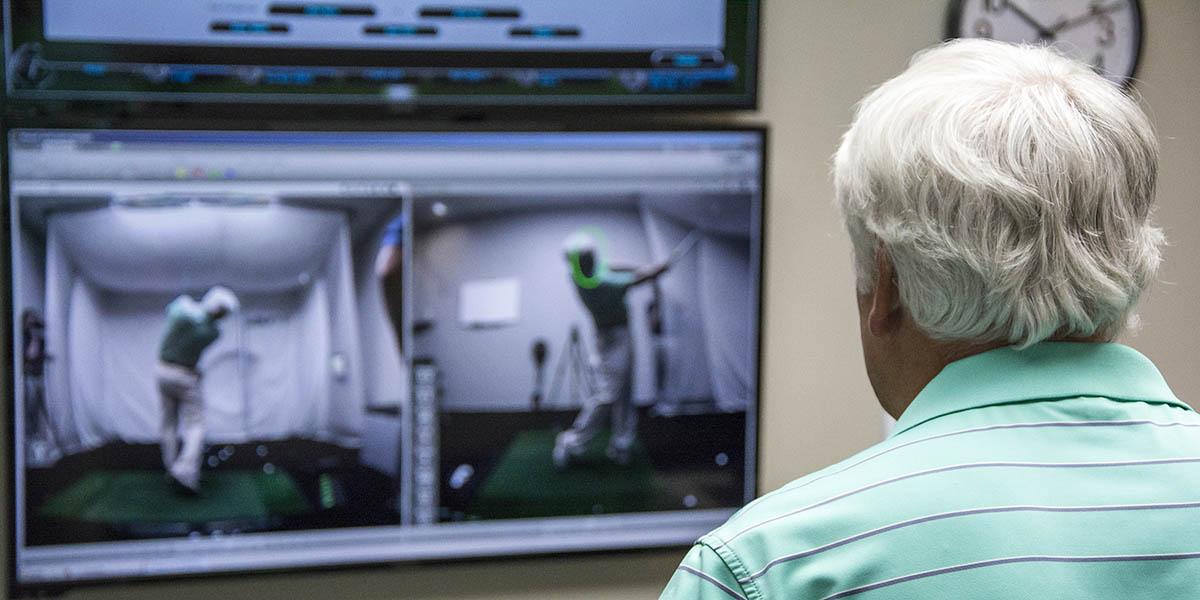Learn how to better translate your lessons to the golf course with these five key tips
By Matt Hough
 Two of the most common frustrations I hear from students are, “I hit it great on the driving range but terrible on the course,” and, “I just can’t seem to demonstrate what I’ve been learning in my lessons when I play.”
Two of the most common frustrations I hear from students are, “I hit it great on the driving range but terrible on the course,” and, “I just can’t seem to demonstrate what I’ve been learning in my lessons when I play.”
Yes, golf can be a tricky sport, as it can be challenging to maintain the confidence we’ve gained in the bay and let our body relax enough on the course to do what it knows how to do.
What we need to realize, however, is that golf is one of the most unique sports in existence, considering no two shots on the course are exactly alike.
When you combine that with fear that can creep into our heads when O.B. or water looms, it’s easy to see why it can be tough to make that same, confident swing with your 6-iron you do just about every time in the bay.
So, let’s discuss five ways to translate your golf lessons to the course with confidence!
1. Understand what you’re trying to change and why

This is vitally important, and should always be done first in the teaching bay with you and your Coach.
Make sure you ask questions in every lesson, and try to leave each lesson with an understanding of what you need to do, and why you need to do it. This means you should truly understand the goals for changes in your motion measurement numbers and ball flight. That will greatly help your chances of making the changes stick when you get out on the golf course.
2. Focus on your fundamentals

The best players in the world all have unique signatures to their swings, but as the GOLFTEC SwingTRU Motion Study has factually proven, there are parts of the swing almost all great players do nearly the same.
Starting with the basic fundamentals of grip, posture and alignment helps lead to swinging within the movements that most closely correlate to highly skilled golfers.
The best players in the world are also incredibly disciplined with perseverance to accomplish their goals. When they practice, they think about what they are trying to do, work hard and never give up. The more amateur golfers can learn to practice this way themselves, the better they will be able to take something new they’ve learned in their lessons to the golf course.
3. Use a pre-shot routine

Using an effective pre-shot routine is great way to take the new move to the course. Some tips to develop a solid pre-shot routine are to incorporate a drill or exercise given by your Coach, followed by one or two practice swings before you step up and hit the shot.
Once in the shot, try to recreate the same feeling from the drill and your practice swings.
4. Leave enough time to warm up before you play

Before you go out to play, visit the range or your local GOLFTEC Training Center, take advantage of your practice plan and work on that new move before you take it to the course.
While there, try to get a feel for your changes and how they may influence ball flight on the course. This will help you know what to expect and when you play, and you can then plan your game strategy accordingly.
When in a GOLFTEC Training Bay, for example, use the Foresight launch monitors to choose from hundreds of golf courses to digitally mimic the real thing with your new technique and pre-shot routine.
This will also help you adjust distances you with each club, as your new technique will often make you hit the ball farther!
5. Fully commit and accept the results, good or bad

This last tip is arguably the most important one. To best translate your lessons to the golf course, it’s imperative to fully commit to the changes you’re trying to make – AS YOU’RE HITTING YOUR SHOT.
It’s one thing to commit to a swing change in theory, but it’s another when you’re staring down a tight fairway or water-infested green. So try consciously committing to your new technique as you’re setting up to help ensure you’re all in at the moment of truth.
Of course, this is just half of the equation, because it’s also important to accept your results, good or bad.
A ll too often, golfers stick with their new technique for just one or two holes, then give up because of one bad shot and revert back to their previous swing or try something different entirely. This simply undoes all the hard work you’ve done in the Training Bay, and often doesn’t lead to sustained improvement.
ll too often, golfers stick with their new technique for just one or two holes, then give up because of one bad shot and revert back to their previous swing or try something different entirely. This simply undoes all the hard work you’ve done in the Training Bay, and often doesn’t lead to sustained improvement.
The moral of the story?
Accomplish Nos. 1-4 before you hit your opening tee shot, then commit to your new technique in the shot and accept the results, no matter what they are.
This combined process will surely help you translate your lessons to the golf course!
Not sure if these tips are right for you? Find a GOLFTEC near you and talk to a Coach today!











